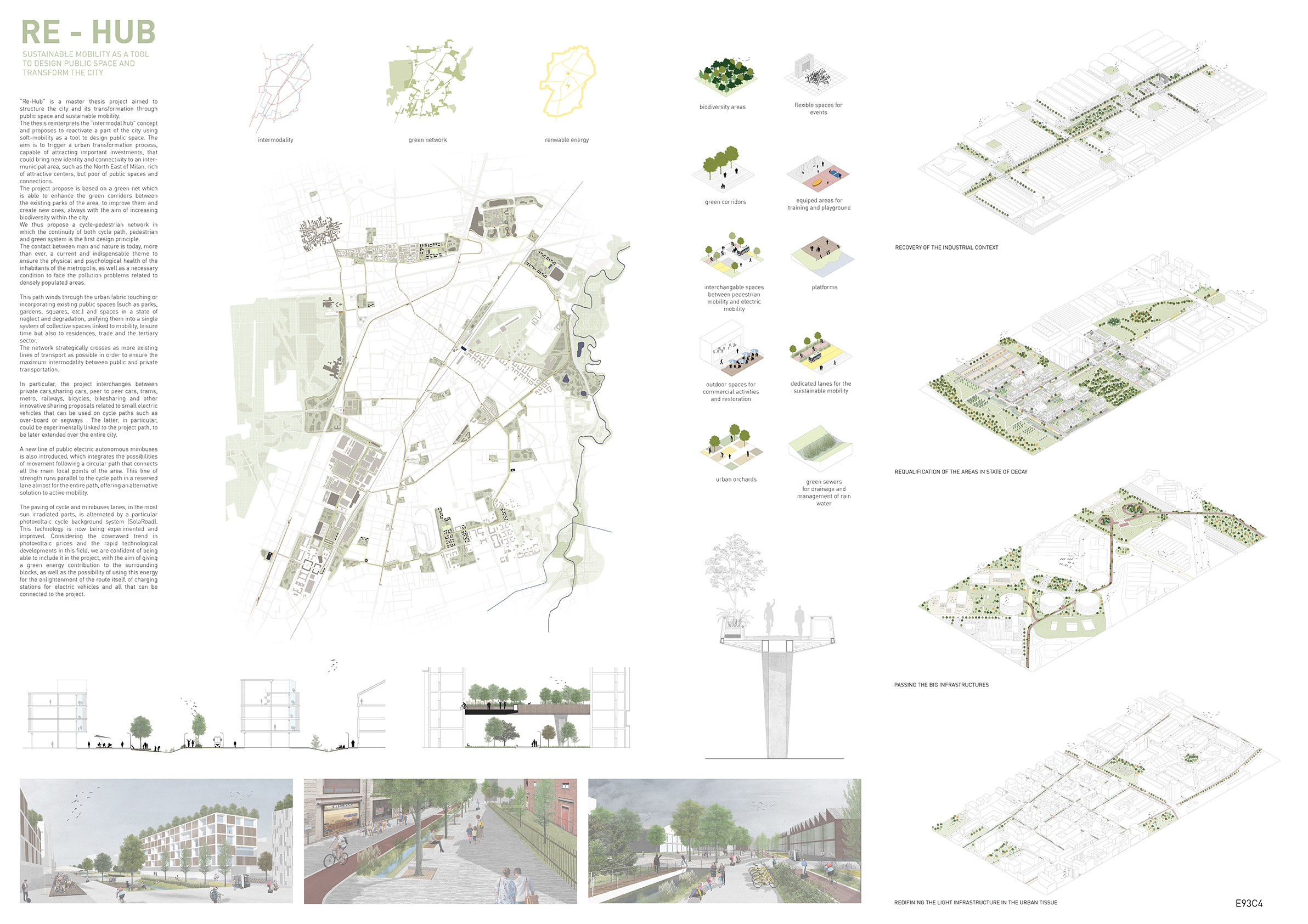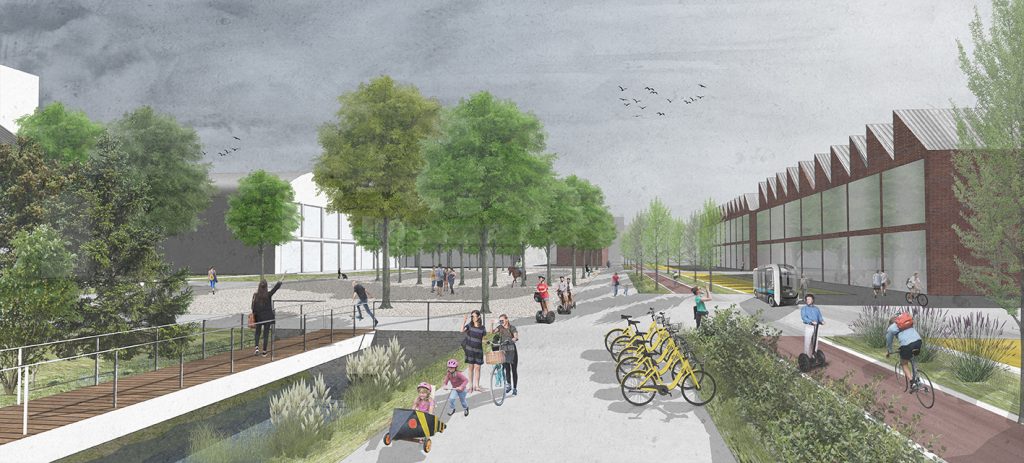“Re-Hub” is a master thesis project aimed to structure the city and its transformation through public space and sustainable mobility.
The thesis reinterprets the “intermodal hub” concept and proposes to reactivate a part of the city using soft-mobility as a tool to design public space. The aim is to trigger a urban transformation process, capable of attracting important investments, that could bring new identity and connectivity to an inter-municipal area, such as the North East of Milan, rich of attractive centers, but poor of public spaces and connections.
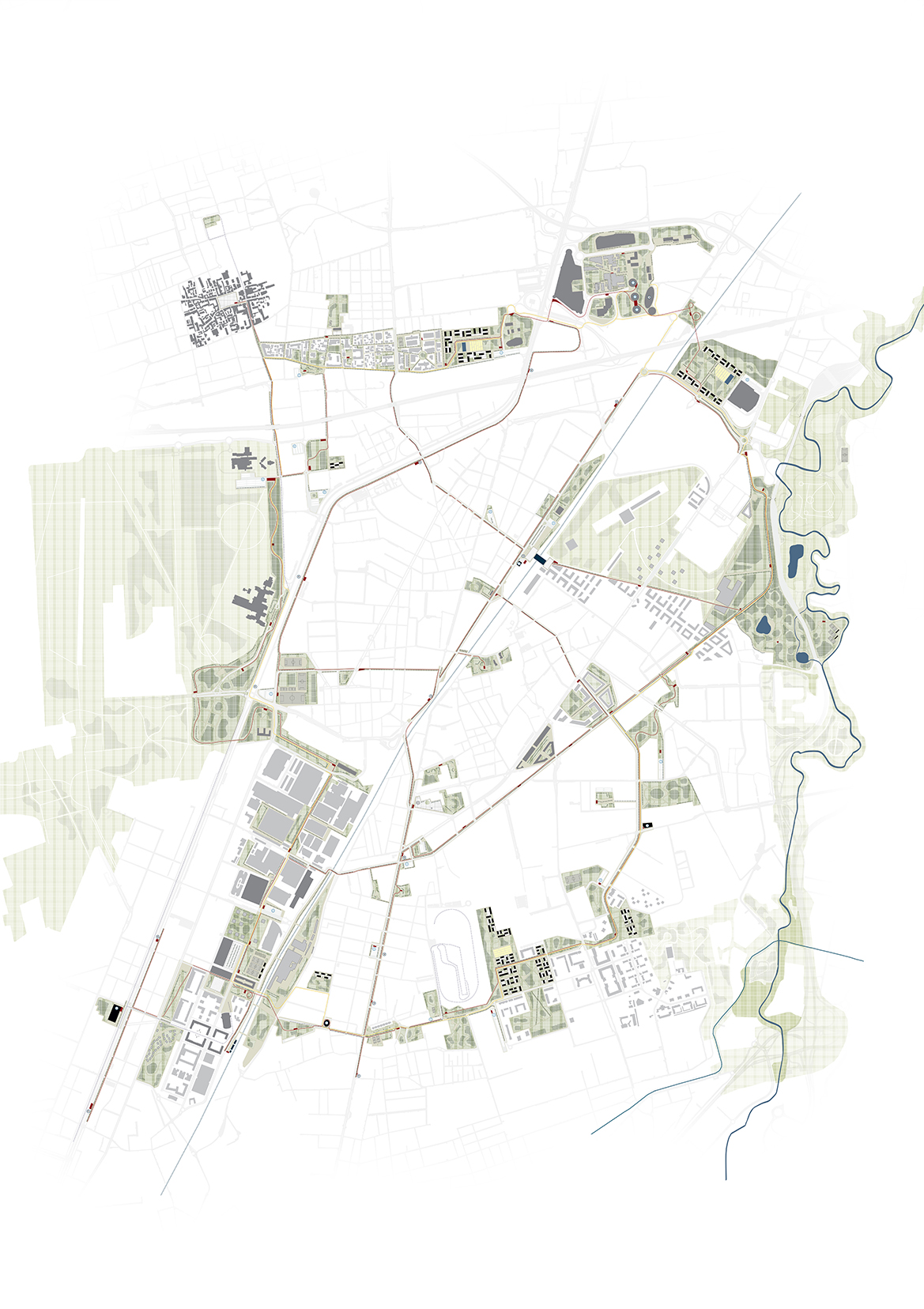
The project propose is based on a green net which is able to enhance the green corridors between the existing parks of the area, to improve them and create new ones, always with the aim of increasing biodiversity within the city. We thus propose a cycle-pedestrian network in which the continuity of both cycle path, pedestrian and green system is the first design principle. The contact between man and nature is today, more than ever, a current and indispensable theme to ensure the physical and psychological health of the inhabitants of the metropolis, as well as a necessary condition to face the pollution problems related to densely populated areas. This path winds through the urban fabric touching or incorporating existing public spaces (such as parks, gardens, squares, etc.) and spaces in a state of neglect and degradation, unifying them into a single system of collective spaces linked to mobility, leisure time but also to residences, trade and the tertiary sector. The network strategically crosses as more existing lines of transport as possible in order to ensure the maximum intermodality between public and private transportation.
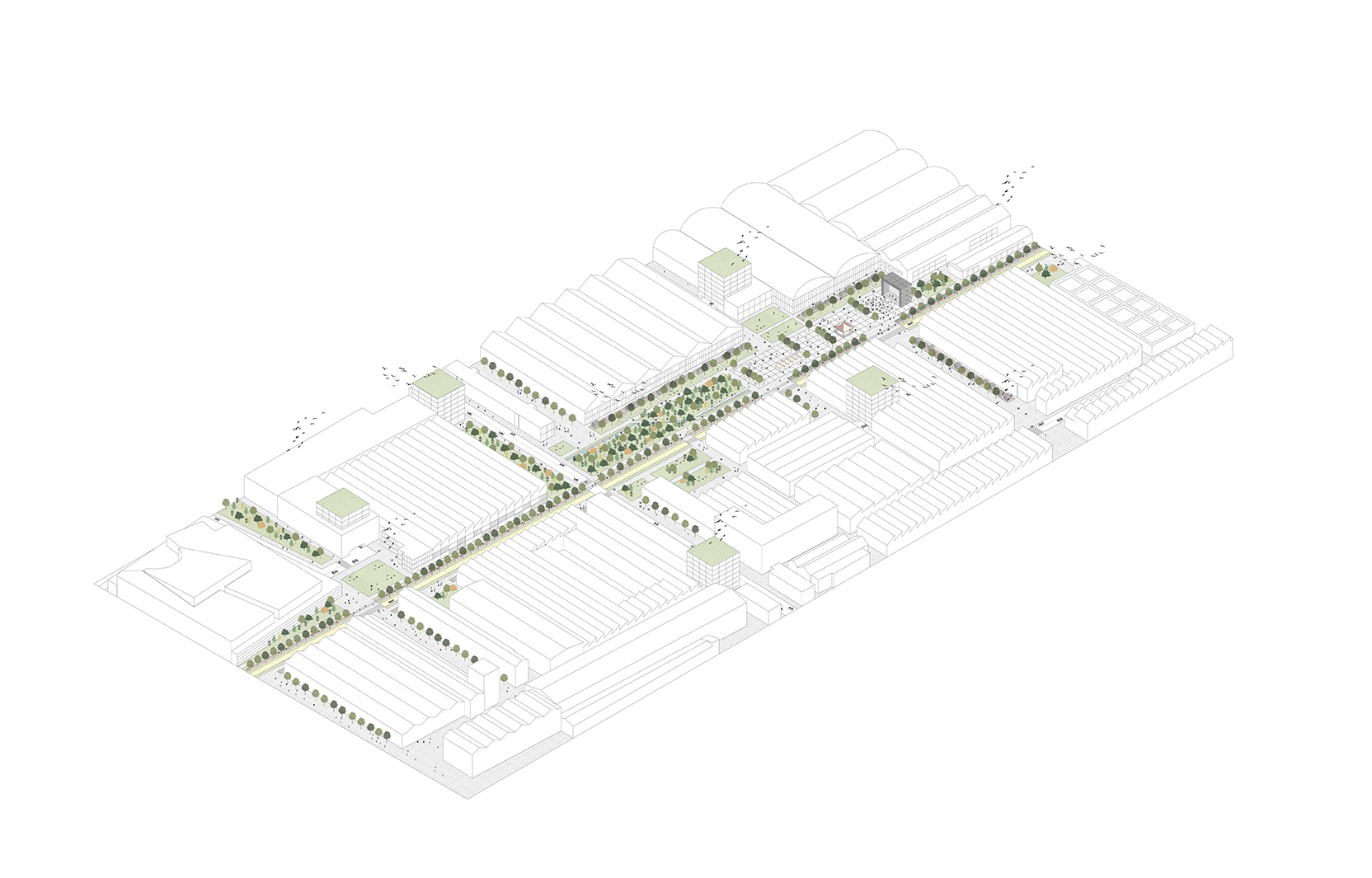
In particular, the project interchanges between private cars,sharing cars, peer to peer cars, trams, metro, railways, bicycles, bikesharing and other innovative sharing proposals related to small electric vehicles that can be used on cycle paths such as over-board or segways . The latter, in particular, could be experimentally linked to the project path, to be later extended over the entire city. A new line of public electric autonomous minibuses is also introduced, which integrates the possibilities of movement following a circular path that connects all the main focal points of the area. This line of strength runs parallel to the cycle path in a reserved lane almost for the entire path, offering an alternative solution to active mobility. The paving of cycle and minibuses lanes, in the most sun irradiated parts, is alternated by a particular photovoltaic cycle background system (SolaRoad). This technology is now being experimented and improved. Considering the downward trend in photovoltaic prices and the rapid technological developments in this field, we are confident of being able to include it in the project, with the aim of giving a green energy contribution to the surrounding blocks, as well as the possibility of using this energy for the enlightenment of the route itself, of charging stations for electric vehicles and all that can be connected to the project.
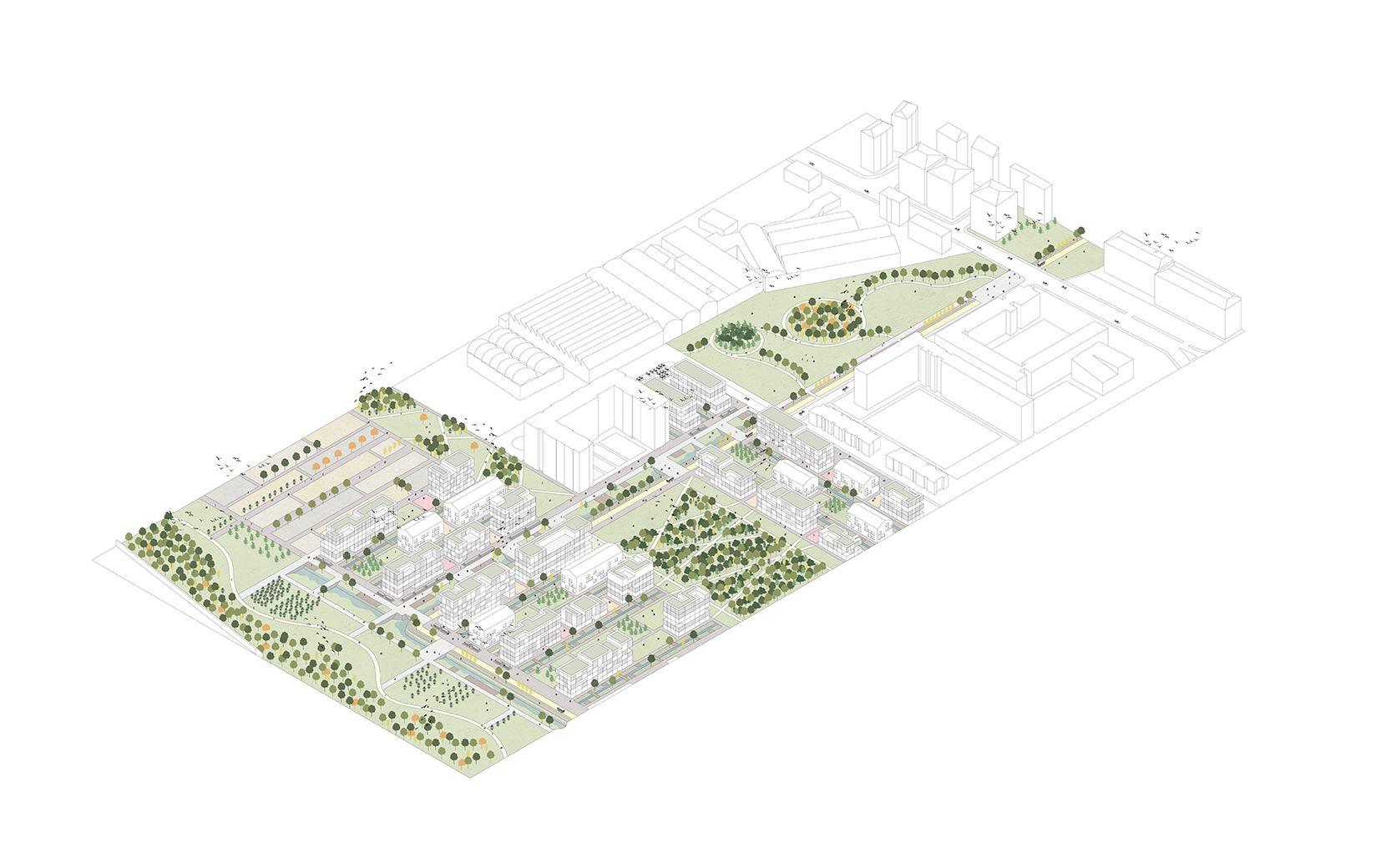
The Board:
